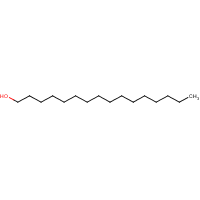Cetyl alcohol
Agent Name
Cetyl alcohol
Alternative Name
1-Hexadecanol
CAS Number
36653-82-4
Formula
C16-H34-O
Major Category
Other Classes

Synonyms
1-Hexadecanol; 1-Cetanol; 1-Hexadecyl alc; 1-Hexadecyl alcohol; Adol; Adol 52; Adol 52 NF; Adol 520; Adol 54; Alcohol C-16; Aldol 54; Alfol 16; Atalco C; C16 alcohol; CO-1670; CO-1695; Cachalot C-50; Cachalot C-51; Cachalot C-52; Cetaffine; Cetal; Cetalol CA; Cetanol; Cetylic alcohol; Cetylol; Crodacol C; Crodacol-CAS; Crodacol-CAT; Dytol F-11; EPAL 16NF; Elfacos C; Ethal; Ethol; Fatty alcohol(C16); Hexadecan-1-ol; Hexadecanol; Hexadecanol (VAN); Hexadecyl alcohol; Hexadecyl alcohol, normal; Hyfatol; Hyfatol 16; Lanol C; Lorol 24; Loxanol K; Loxanol K Extra; Loxanwachs SK; N-Hexadecanol; N-Hexadecyl alcohol; Normal primary hexadecyl alcohol; Palmityl alcohol; Product 308; Siponol CC; Siponol Wax-A; n-1-Hexadecanol; n-Cetyl alcohol; n-Hexadecanol; n-Hexadecyl alcohol; [ChemIDplus]
Category
Alcohols and Polyols, Other
Description
White solid; [Hawley]
Sources/Uses
Used in cosmetics, pharmaceuticals, perfumes, and shampoos (emollient and emulsion modifier) and to make face creams, lotions, lipsticks, toilet preparations, and antiperspirant sticks; Also used as a coupling agent, foam stabilizer in detergents, base for making sulfonated fatty acids, monomer lubricant in suspension polymerization, and
to retard evaporation of water when spread as a film on reservoirs or sprayed on growing plants; [HSDB]
Comments
Higher alcohols are not highly toxic in the industrial setting; Can cause liver injury, somnolence, and respiratory depression in experimental animals; [HSDB] In high-dose feeding studies, causes somnolence in rats and ataxia in dogs; [RTECS] Safe when used as a flavoring agent in food; [JECFA] An irritant; [MSDSonline]
Biomedical References
Exposure Assessment
Vapor Pressure
3.06E-06 mm Hg
Lethal Concentration
LCLo (rat) = 2,220 mg/m3/6h
Explanatory Notes
Flash point = 175 deg C; [eChemPortal: IUCLID] VP from ChemIDplus;
Adverse Effects
Neurotoxin
Acute solvent syndrome
Hepatotoxin
Hepatoxic (a) from occupational exposure (secondary effect) or (b) in animal studies or in humans after ingestion
Diseases, Processes, and Activities Linked to This Agent
Diseases
Occupational diseases associated with exposure to this agent:
Processes
Industrial Processes with risk of exposure: